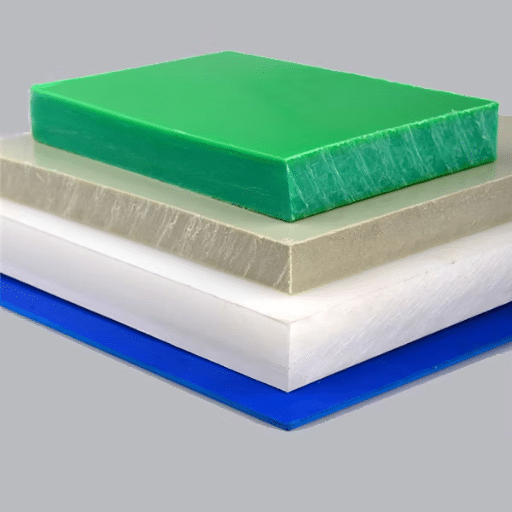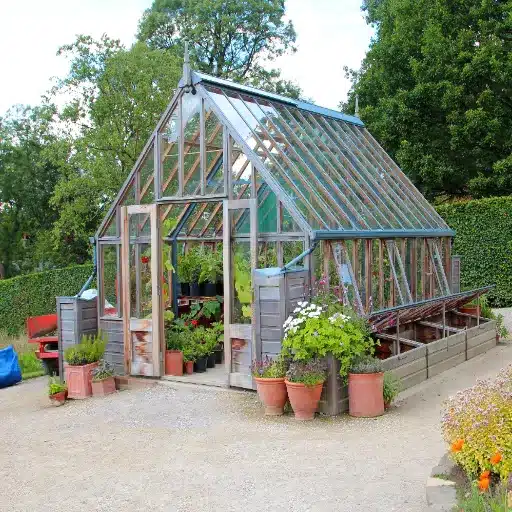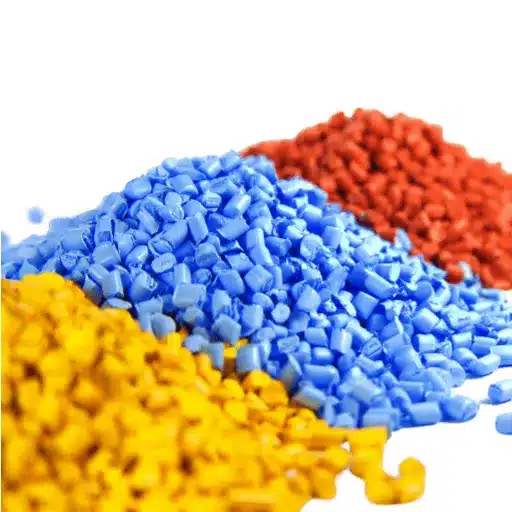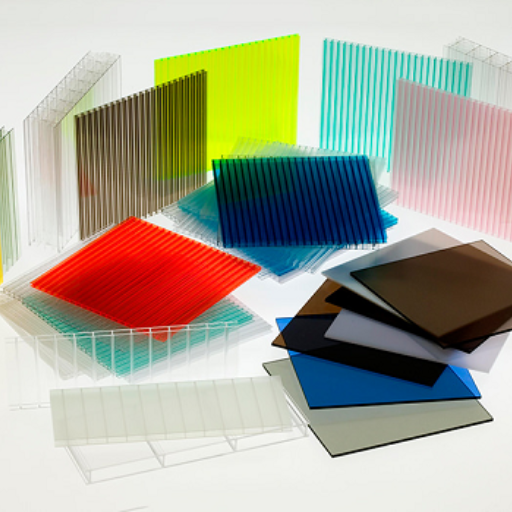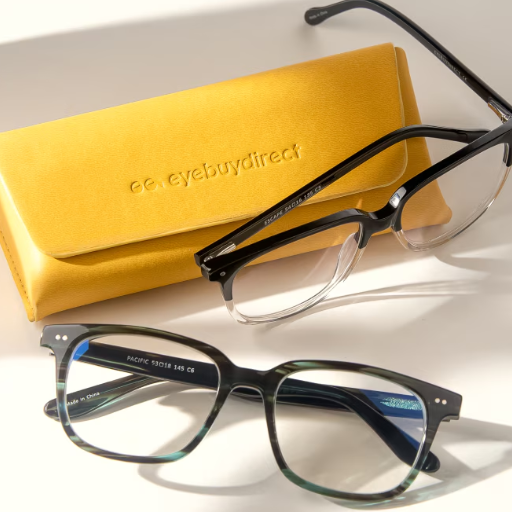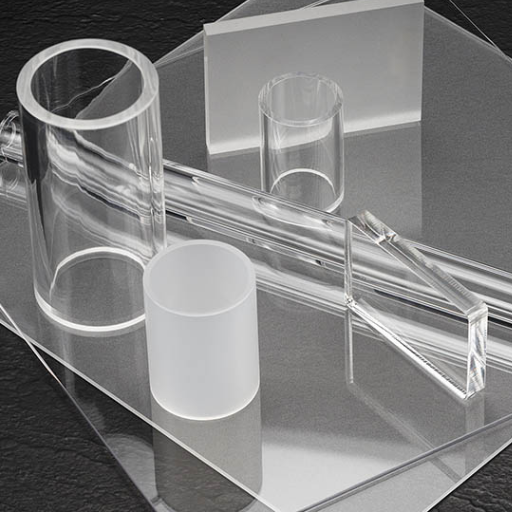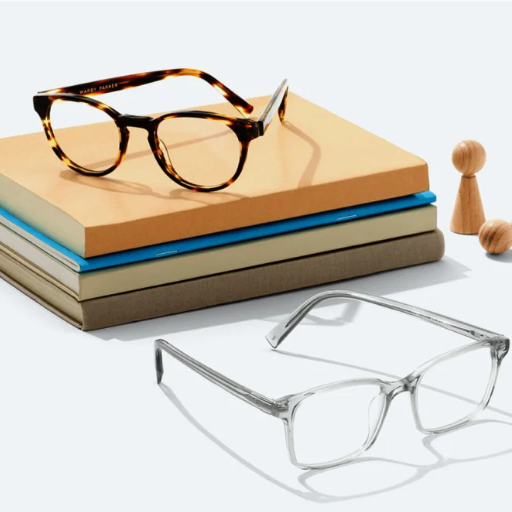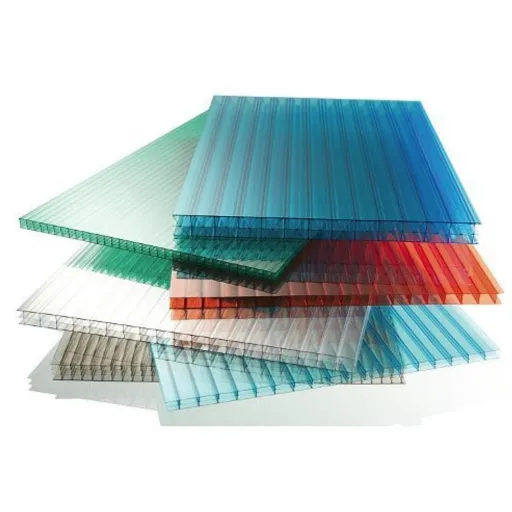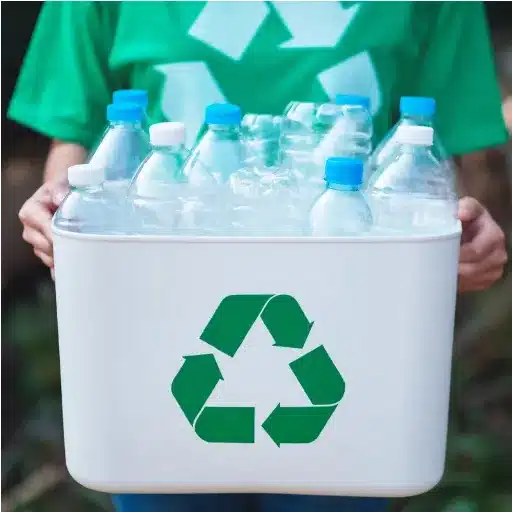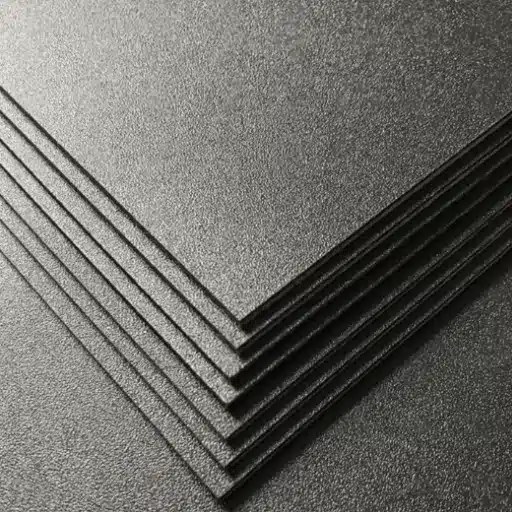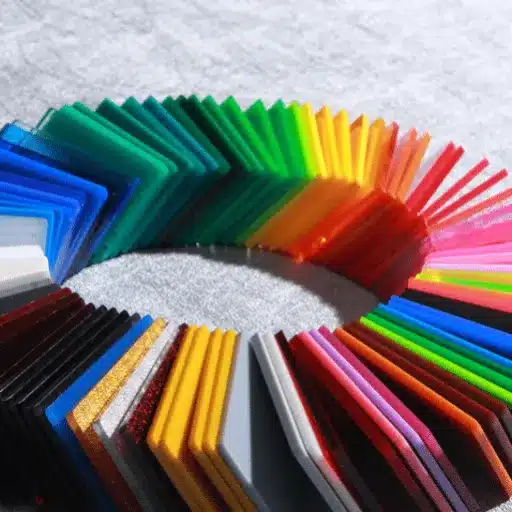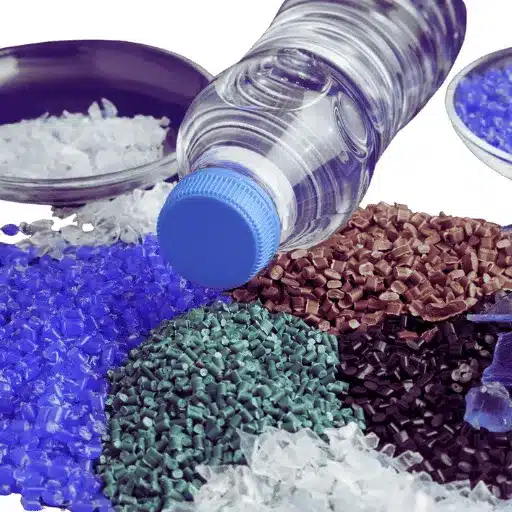The polycarbonate is a substance that has caused a revolution in the industries, thanks to its outstanding combination of durability, adaptability, and clarity. The applications of this strong and light plastic range from daily items such as glasses and bottles to crucial ones like building and tech. But the question still remains: what is it that gives polycarbonate such a superpower and why it still is a material of choice for many varied applications? So, through this article, we will not only talk about the outstanding features of polycarbonate but also about the industries it serves and its most common applications. If you are a user, maker, or just interested in the materials that create and change our world, this guide will give you the insights on the infinite potentials of polycarbonate.
Introduction to Polycarbonate
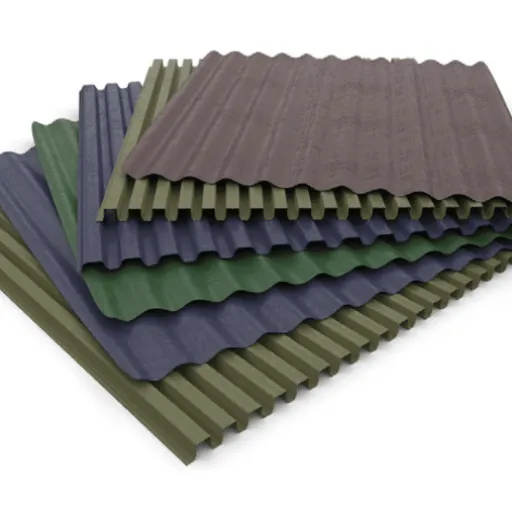
What is Polycarbonate?
Polycarbonate, in a nutshell, is a multipurpose and robust Thermoplastic polymer which is ranked among the top choice materials with the highest quality and best features in multiple industries. It is a great substitute for glass and acrylic as it has high impact resistance, transparency, and is very light-weight. Polycarbonate is produced through the polymerization process of Bisphenol A (BPA) and Phosgene which leads to the creation of a material that can easily be reshaped, molded, and thermally formed. Polycarbonate also has properties like stress resistance, UV protection, and heat protection that make it a complementary material to be used in the construction, automotive, electronics, and consumer goods sectors. Moreover, polycarbonate being recyclable increases its attractiveness as a more eco-friendly choice in manufacturing.
🔬 Key Material Properties
- High impact resistance – superior to glass and acrylic
- Exceptional transparency – up to 90% light transmission
- Lightweight construction – 50% lighter than glass
- Thermal stability – withstands -40°F to 248°F
- Recyclable – environmentally sustainable option
History and Development of Polycarbonate Plastic
Polycarbonate plastic was first synthesized in 1898 by the German scientist Alfred Einhorn. However, it was not until the middle of the 20th century that the material got the commercial attention. A major breakthrough was achieved in the year 1953 when Hermann Schnell from Bayer in Germany and Daniel W. Fox from General Electric in the US simultaneously developed and patented methods for the production of polycarbonate. They did this without any collaboration and were completely unaware of each other’s work.
While Schnell is credited with the development of large-scale manufacturing processes, Fox’s work with the General Electric company was the one that opened a variety of industrial applications for polycarbonate.
| Year | Milestone | Significance |
|---|---|---|
| 1898 | First Synthesis | Alfred Einhorn synthesizes polycarbonate for the first time |
| 1953 | Commercial Breakthrough | Hermann Schnell (Bayer) and Daniel W. Fox (GE) independently develop production methods |
| Late 1950s | Commercialization | Initial applications in automotive and aerospace sectors |
| Present Day | Industry Standard | Widespread use across construction, electronics, optical media, and consumer goods |
Commercialization of polycarbonate saw the light in the late 1950s, and just then its versatility was soon acknowledged. For instance, it was initially used in automotive and aerospace sectors because of its strength and transparency, but polycarbonate is now used widely in industries such as construction, electronics, optical media, and consumer goods. The present-day scenario shows that the authorities have imposed environmental regulations that demand sustainable material, hence the recycling process of polycarbonate continues to improve. A material discovered over a century ago still remains an essential factor in engineering and manufacturing today because of these incessant developments.
Common Uses of Polycarbonate Sheets
Polycarbonate sheets have received great acclamation for their quality of being durable, clear, and versatile which is a prime reason for them to be treated as very necessary and useful material in many industries. To name a few, some common usages are:
🏗️ Construction and Architecture
Due to the fact that polycarbonate sheets can tolerate extreme weather conditions while still permitting a high rate of light transmission, they are very often used as a part of the structure in creating skylights, greenhouses, and roofing. Besides being strong, they are also light in weight making it easy for craftsmen to install and highly efficient in fields where sturdy transparency is required.
🚗 Automotive and Transportation
These sheets are very commonly used in the auto-making industry for the production of various components including headlight lenses, sunroofs, and windscreens. Their impact resistance guarantees safety and durability even in places where stress is high.
💻 Electronics
Polycarbonate is the mainstay of the electronics sector as its main role is the supplying of LED screens, diffusers, and housings for electronic devices. Its excellent insulating properties and flame resistance are critically important for the safety and functioning of modern electronics.
🛡️ Safety Applications
Polycarbonate’s impact resistance makes it suitable for a wide range of safety applications, including the production of bulletproof glass, riot shields, and protective helmets. It imparts the glass-like strength without compromising on the visibility or comfort factor.
📢 Signage and Displays
Vibrant visual presentations are the hallmark of the business world; hence polycarbonate sheets are sought after for such applications as illuminated signs and advertising displays. Polycarbonate’s weather resistance and ability to print vivid graphics make it perfect for such applications. This translates into high-quality visibility indoors and outdoors that lasts long.
🏥 Medical Devices
Polycarbonate has made its mark in the medical field by introducing incubation devices, surgical instruments, and enclosures for medical equipment. Its ability to be sterilized and its high clarity make it a favorite material for sensitive medical applications.
📈 Current Market Trends
Polycarbonate sheets are still on the rise as manufacturers are constantly upgrading their characteristics to satisfy modern needs such as UV protection and recyclability. Recent search data has shown a significant increase in queries for polycarbonate materials in relation to sustainability and innovative applications which indicates a growing trend towards eco-friendly advancements and the material’s wider use in various high-tech sectors.
Characteristics and Properties of Polycarbonate
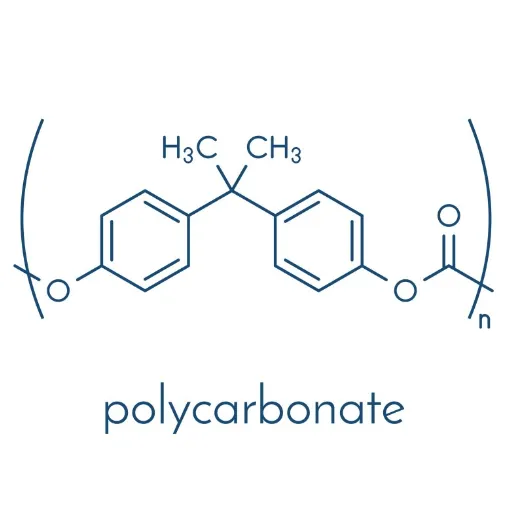
Physical Properties of Polycarbonate
The first thing that comes to your mind when speaking of polycarbonate is that it is one of the most adaptable thermoplastics—besides the latter it possesses the qualities of high impact resistance, low weight, and excellent optical view. Its strength under mechanical stresses is extremely high since it is able to take a lot of such stresses before it breaks or changes shape; to add, the material is absolutely clear, as it allows around 90% of the light to pass through it, thus it becomes very good glass replacement in many applications. Besides, polycarbonate has excellent heat resistance which allows it to be used in applications with varying temperature ranges of -40°F to 248°F (-40°C to 120°C).
| Property | Specification | Benefit |
|---|---|---|
| Impact Resistance | 250x stronger than glass | Superior durability for safety applications |
| Light Transmission | Up to 90% | Excellent optical clarity comparable to glass |
| Temperature Range | -40°F to 248°F (-40°C to 120°C) | Maintains properties in extreme conditions |
| Weight | 50% lighter than glass | Easier installation and reduced structural load |
According to the latest research data, the durability and sustainability of polycarbonate are among the most sought-after topics. The searches mainly concern its recycling and reusing potential as well as its performance while being subjected to UV light or other harsh environments. This shows that the consumers and the industries are now looking for material solutions that are both sustainable and durable, which is a change in their priorities.
Resistance to Chemicals and BPA Problems
Polycarbonate is always present in the list of the most chemical-resistant materials, thus it is widely used in tough environments. The material is not affected by oils, acids, and alcohols, thus its transparency and toughness are maintained for a long period of time. But the latest traces have uncovered that the question of whether polycarbonate contains Bisphenol A (BPA) is still a hot potato. BPA is a chemical compound that is necessary for producing polycarbonate, and the risk of its migration into food or beverages under some conditions is a public health issue.
⚠️ BPA Safety Considerations
To make the situation better, companies have introduced BPA-less products that assure the safety of consumers without compromising the durability and widespread use of the material. Also, the government has imposed certain restrictions on the use of BPA in the manufacture of containers for food and beverages that are to be consumed without further treatment, thus creating a safety net that these restrictions are indeed strict.
The active pursuit of innovation and sustainability in the polycarbonate industry reflects a willingness to address both, the safety and environmental issues.
Impact Properties and Toughness
Polycarbonate is a plastic that sets the standard for impact and resistance and durability; it is also the most applied among materials in almost all sectors due to this quality. People have been asking very often lately about the practical applications of this material in highly stressed areas. Its ability to cope with extreme pressure is a big plus not only for the automotive industry but also for the construction and safety equipment industries. Described as ‘tougher than glass’ and with strength up to 250 times, polycarbonate is compliant with safety standards and even offers a long-lasting performance in extreme environments. In fact, these elements altogether are the reasons why polycarbonate is always first in line when it comes to the most demanding areas in terms of both durability and versatility.
Applications of Polycarbonate
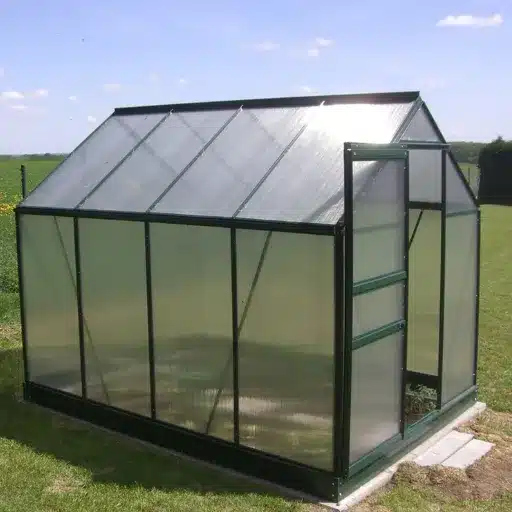
Polycarbonate in Construction and Architecture
Polycarbonate has opened up a new frontier in construction and architecture by providing a lightweight, extremely durable, and versatile material. Its impact resistance and clarity have made it one of the most sought-after materials for weather protection, roofs, skylights, and facades. Polycarbonate is around 50% lighter than glass, which means less weight on the structure, simpler installation, and better insulation. Therefore, polycarbonate becomes an ideal building material for energy-efficient designs.
🌞 Energy Efficiency
Allows natural light to reduce artificial lighting needs and lower energy consumption
☀️ UV Resistance
Withstands harsh weather conditions without degradation over time
🏗️ Design Flexibility
Molds to different climatic and aesthetic requirements for modern projects
As per the information from search trends, interest in polycarbonate is increasing mainly because of its use in sustainable architecture and green buildings. Polycarbonate panels are being increasingly used by architects as a tool to let in more natural light into buildings thus reducing the need for artificial lighting and consequently lowering the energy consumption. Moreover, polycarbonate’s UV resistance, weatherability, and design flexibility all contribute to the point that it can mold into different climatic and aesthetic requirements and still be the preferred material in modern-day construction projects.
Use of Polycarbonate in Consumer Products
Polycarbonate has given birth to a plethora of consumer products, mainly because of its strength, transparency, and versatility. It is the case with items like glasses lenses, electronic device covers, water bottles, and protective gear that polycarbonate offers a perfect blend of toughness and lightweight properties thus, product durability and usability are improved. For instance, its impact resistance makes it suitable for helmets and shields designed for safety, while its optical clarity guarantees excellent performance in visual applications like camera lenses and automotive headlight. With the world turning to sustainability, polycarbonate’s recyclability and long life span further seals its place as a material of choice for the manufacturers who are aiming to minimize waste and promote eco-friendly practices.
Food Contact Applications of Polycarbonate
Polycarbonate’s remarkable traits ensure it is widely used for various food contact applications. Its strength, lightness, and super heat resistance make it a material that not only meets but also exceeds the most stringent safety and performance requirements. Plastic reusable water bottles, food containers, and kitchen utensils are common examples of polycarbonate usage, such as jugs and measuring cups. In some parts of the world, polycarbonate is approved by the FDA for repeated food contact as long as it meets the standards for safe use and the requirements of the jurisdiction. The durability of the material in high temperature makes it fit for the products such as microwave-safe and dishwasher-safe, contributing to its wide acceptance.
🔬 Safety Advancements
Recent studies indicate that there are still continuous advancements in the manufacturing of polycarbonate that are aimed at increasing its safety and lowering possible health concerns. The modern production process aims to bring down the residual amounts of BPA in BPA-containing polycarbonates to a level that is considerably lower than the updated regulatory standards. This, in turn, has all the more reinforced polycarbonate’s position in food applications since the industries and research are all the time innovating and coming up with consumer-safe and sustainable materials.
Advantages and Disadvantages of Polycarbonate Plastic
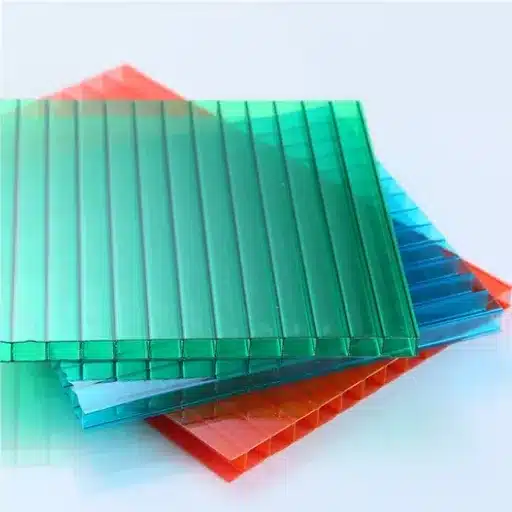
Advantages of Utilizing Polycarbonate
Polycarbonate is a type of plastic that provides numerous advantages, which in turn leads to its popularization and use in many industries as a highly versatile material. Its main advantage is the astonishing ratio of strength to weight, which helps give the material effective resistance against impact and at the same time keeping it light. In this way, polycarbonate becomes suitable for use in many products or parts such as goggles for protection against dust, panels for safeguarding, and automotive components. Furthermore, the plastic is also very transparent, with the ability of transmitting light up to 90%, which makes it comparable to glass but its durability is significantly higher.
✅ Key Advantages of Polycarbonate
💪 Superior Strength-to-Weight Ratio
Exceptional impact resistance while remaining lightweight for easy handling and installation
🔍 Excellent Transparency
Up to 90% light transmission, comparable to glass with superior durability
🌡️ Thermal Stability
Maintains properties in extreme temperatures from -40°F to 248°F
🔧 Easy to Form
Heat resistant and moldable, allowing manufacturers to pursue effectiveness and versatility
♻️ Recyclable Material
Environmentally friendly with improved recycling processes and reduced footprint
🛡️ Chemical Resistance
Resistant to oils, acids, and alcohols in harsh environments
An additional to polycarbonate’s advantages is its thermal stability, which allows polycarbonate to survive both extremes of temperatures while still retaining its properties. This capability is critical in situations where electronic devices or outdoors installations are to bear differing and harsh environmental conditions. Moreover, the material is also easy to shape and heat resistant which is why it has become so popular with manufacturers pursuing effectiveness and versatility in design.
Moreover, new studies suggest the recycling polycarbonate to be more environmentally friendly. The innovations in producing and recycling have resulted in a smattering of firms that use recycled polycarbonate with reduced environmental footprints. Durability, transparency, thermal stability, and sustainability are the four factors that keep polycarbonate as a reliable and progressive choice in contemporary material science.
Disadvantages and Environmental Issues
Polycarbonate, even with its numerous benefits, has some drawbacks that can be hard to ignore. The most prominent one is that it can easily get scratched which affects the clarity of the material over time if not allowed for with coatings. Another thing is that, although it is tough, plastic can lose its quality through absorbed UV radiation and thus its lifespan in the outdoor will be curtailed unless the right stabilizers are used.
⚠️ Challenges and Limitations
🔪 Scratch Susceptibility
Can easily get scratched, affecting clarity over time without protective coatings
☀️ UV Degradation
May lose quality through UV radiation exposure without proper stabilizers
🏭 Production Emissions
Manufacturing process emits greenhouse gases contributing to climate change
🗑️ Disposal Challenges
Does not decompose naturally, contributing to pollution if not properly recycled
Environmental experts are concerned mostly about the production and waste disposition of polycarbonate. It is a hydrocarbon-based material, and its production emits gases leading to climate change. Also, if the material is not disposed of properly, it will contribute to pollution as it does not decompose naturally.
🌱 Positive Environmental Developments
Still, there has been good news recently in that recycling is becoming a more developed area backed by technological advancements in the field allowing more polycarbonate material to be recovered for reuse. The same data points towards a faster shift of industries to eco-friendly methods, including the use of post-consumer recycled polycarbonate and the development of bio-based alternatives. Such measures are not only aimed at lessening the damage done to the environment but also at ensuring that polycarbonate remains the dual performer in terms of needing fewer resources and being acceptably good for nature.
Contrasting Polycarbonate with Other Plastics
Polymers of the polycarbonate plastic variety are inferior to none when it comes to the strength and durability of the product, as well as its transparency and thermal stability. Constituting a quartet of attributes, polycarbonate even outshines acrylic and polyethylene in one area of application—its impact resistance. This renders going down the polycarbonate road to be the safest route for high-stakes jobs requiring the likes of big impact rejection for safety glasses, car windshields, and even CD’s. For, in contrast with acrylic, polycarbonate, which is less prone to breakage, can handle a lot of stress without being cracked. Furthermore, when it comes to polyethylene, polycarbonate can be said to provide better dimensional stability and heat resistance, thus, it won’t fail in extremes.
| Property | Polycarbonate | Acrylic | Polyethylene |
|---|---|---|---|
| Impact Resistance | ★★★★★ Excellent | ★★★☆☆ Moderate | ★★★☆☆ Moderate |
| Transparency | ★★★★★ 90% Light | ★★★★★ High | ★★☆☆☆ Low |
| Heat Resistance | ★★★★★ Excellent | ★★★☆☆ Moderate | ★★☆☆☆ Low |
| Scratch Resistance | ★★☆☆☆ Low | ★★★★☆ Good | ★★★☆☆ Moderate |
| Recyclability | ★★★★☆ Good | ★★★★☆ Good | ★★★★★ Excellent |
| Weight vs Glass | 50% Lighter | 50% Lighter | Light |
Besides, the tendency is increasing to use sustainable materials as noted in the data recently reported by ‘s search engine. It can be traced back to the transition from conventional plastics to polycarbonate, as now it is being preferred more for its recyclability and raising of possibility for integrating into circular manufacturing. Polyethylene may still be the king of the kingdom of industries needing light solutions, but polycarbonate is fastly becoming the staple in areas where the strength, transparency, and reusability of its products are the most important factors. This clearly shows that polycarbonate is not only getting better at coping with sustainability pressures but also that it is keeping its competitive advantage over other materials by doing so.
Frequently Asked Questions (FAQ)
Q
What are the characteristics of polycarbonate plastic?
Polycarbonate plastic features a number of outstanding attributes such as high impact strength and heat resistance. This thermoplastic can be molded and shaped in different ways with ease, thus it is suitable for many applications. Among its advantages, a crucial one is the glass transition temperature that enables it to hold its ground in the flukes of temperature change. On top of that the polycarbonate shines with its amazing scratch resistance, thereby making it a perfect alternative for the applications like the lenses of eyeglasses and headlamps. Besides, its combining glass features with plastic remains non-glass light and high tensile strength that even lead to the belief of safety without performance sacrifice.
Q
What are the applications of polycarbonate in food containers?
Polycarbonate is a widely used material in the production of food containers as a result of its various BPA-free types and its great dimensional stability. Its strength is versatile enough for food contact applications of both reusable water bottles and storage solutions. The material is also highly resistant to impacts and breakage, thus preventing food from getting lost or spoiled. Besides, it is common that polycarbonate containers are made by injecting molding which is an efficient method of producing large quantities of items of different shapes and sizes. These food containers are made to endure extreme temperature changes and they are therefore suitable for both hot and cold dishes.
Q
How does the production of polycarbonate differ from other plastics?
One step in making of polycarbonate is polymerizing of bisphenol A and phosgene or another carbonate precursors which leads to completely different resin structure. This is not the case with production of other plastics like acrylonitrile-butadiene-styrene (ABS), where different monomers are mixed to obtain a properties blend. Polycarbonates with their chemical structures containing carbonate groups are the ones responsible for their exceptional transparency and longevity. In addition, polycarbonate can be modified with different additives for the purpose of increasing its flame retardant property or scratch resistance. This flexibility not only makes polycarbonate a popular material for many technical applications, especially where durability count, but it also gives rise to the creation of new products.
Q
Why is polycarbonate considered a preferred engineering plastic?
Among the factors that make polycarbonate a preferred engineering plastic, its high impact strength and wide range of applications are two of the most important ones. Its capacity to resist mechanical stress while maintaining transparency opens up many different uses including glazing and safety glasses. In addition, the very property of polycarbonate, its being resistant to thermal fluctuations and solvents, makes it very suitable for industrial applications. It can be easily and very accurately processed by injection molding thus allowing the production of intricate shaped and sized parts and components. Another factor that raises its popularity is its low weight in comparison with glass and metal, which cumulatively leads to less production costs and less time consumed in setting up processes.
📚 Reference Sources
Princeton University – Polycarbonate Overview
This resource provides a detailed explanation of polycarbonate’s properties, including its impact strength and transparency, making it suitable for applications like face protection and eyeglasses. Source
Johns Hopkins University – PC-ABS Material Properties
This document discusses the desirable properties of polycarbonate blends, such as strength, heat resistance, and flexibility, relevant for engineering applications. Source
PubMed Central – Antimicrobial Polycarbonates for Biomedical Applications
This article highlights the use of polycarbonate in biomedical applications due to its optical clarity, heat resistance, and high impact strength. Source
💡 Key Takeaways
Versatile Material
Polycarbonate combines durability, transparency, and lightweight properties, making it ideal for diverse applications from construction to consumer products.
Superior Strength
With impact resistance 250 times greater than glass and 90% light transmission, polycarbonate offers unmatched performance in demanding environments.
Consider Limitations
While highly durable, polycarbonate can scratch easily and requires UV stabilizers for outdoor use. Proper coatings and treatments extend its lifespan.
Sustainability Focus
Advanced recycling technologies and bio-based alternatives are making polycarbonate more environmentally friendly, supporting circular manufacturing practices.
Wide Industry Use
From automotive components to medical devices, construction materials to electronics, polycarbonate serves critical functions across multiple sectors.
Safety Standards
Modern BPA-free formulations and strict regulatory compliance ensure polycarbonate meets safety requirements for food contact and consumer applications.






